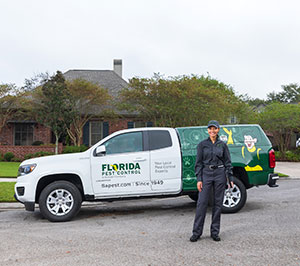Expert A1 Charlotte Bed Bug Exterminator - Quality Solution Ensured
Expert A1 Charlotte Bed Bug Exterminator - Quality Solution Ensured
Blog Article
Bed Bug Treatment Failure: Comparing Chemical Vs. Non-Chemical Solutions
In the realm of insect control, especially when managing the persistent concern of bed insects, the option in between chemical and non-chemical therapy options can be an essential one. Both strategies provide distinctive benefits and downsides, influencing elements such as efficiency, safety and security factors to consider, and overall price. By examining the nuanced details of each technique, a more clear understanding of which path to go after in attending to a bed bug invasion can be attained.
Performance of Chemical Treatments
Chemical treatments for bed insect invasions have actually been widely recognized for their quick and powerful efficiency in getting rid of these pests. When taking into consideration the performance of chemical therapies, it is important to comprehend that they can provide a fast and thorough solution to a bed pest problem.
Moreover, chemical therapies have the advantage of using recurring effects, meaning that they can remain to remove bed pests even after the initial application. This recurring action is especially advantageous in combating any type of prospective re-infestations. In addition, the quick action of chemical treatments can bring alleviation to individuals encountering extreme bed bug invasions, allowing them to regain control of their home rapidly.
Security Worry About Chemical Solutions
One critical aspect that calls for cautious factor to consider when using chemical remedies for bed bug therapy is ensuring the security of occupants and the setting. Exposure to certain chemicals utilized in bed bug therapies can lead to breathing issues, skin inflammation, or other adverse reactions, particularly in people with pre-existing conditions or level of sensitivities.
In addition, the ecological influence of chemical remedies is another significant consideration. Some chemicals utilized in bed insect therapies may be unsafe to helpful bugs, wild animals, and communities if they leach into the soil or water systems. It is important to make use of chemical treatments sensibly, complying with safety standards, and considering much less harmful alternatives to mitigate these risks and guarantee the effective and secure monitoring of bed pest invasions.
Advantages of Non-Chemical Techniques
Considering the prospective safety and security concerns and environmental impact related to chemical options for bed bug therapy, exploring non-chemical techniques offers a promising alternative with a number of distinct advantages. Non-chemical techniques supply a much safer option for homes, particularly those with family pets, individuals, or youngsters sensitive to rough chemicals. These techniques remove the risks of direct exposure to poisonous materials, lowering the possibility for negative health and wellness results. Moreover, non-chemical treatments are eco-friendly, as they do not add to air or water air pollution, making them a lasting selection for insect control.
Furthermore, non-chemical solutions can be reliable in targeting bed bugs, consisting of hard-to-reach locations where chemical treatments might not penetrate - A1 charlotte pest control companies. Approaches such as heat treatment, vacuuming, vapor cleaning, and cushion coverings supply detailed removal without the use of damaging chemicals.
Limitations of Non-Chemical Treatments

Additionally, non-chemical therapies commonly require multiple applications to achieve effective obliteration. This can be time-consuming and might not constantly assure full removal of all bed insects and their eggs, particularly in hidden or hard-to-reach areas.
Furthermore, the success of non-chemical therapies greatly counts on proper implementation and thoroughness, anonymous which can be challenging for individuals without expert proficiency. Insufficient application of non-chemical techniques might cause insufficient elimination, leading to consistent invasions and the requirement for added therapies.
For that reason, while non-chemical therapies have their advantages, it is important to acknowledge these restrictions and consider them when identifying one of the most efficient method for taking care of bed bug infestations.
Cost Contrast: Chemical Vs. Non-Chemical Options
Given the limitations connected with non-chemical therapies, an important aspect to assess in the context of bed insect monitoring is the cost contrast between chemical and non-chemical choices. In comparison, non-chemical therapies like warm therapy or vapor can be a lot more costly, with expenses varying from $1,000 to $6,000 for an entire home. While the preliminary expense of chemical therapies may appear reduced, several therapies might be required to completely remove the invasion, potentially enhancing the total cost.
Conclusion

Taking into consideration the potential security issues and ecological impact associated with chemical solutions for bed pest treatment, exploring non-chemical strategies presents a promising option with several unique advantages.Offered the restrictions linked with non-chemical treatments, a vital facet to assess in the context of bed bug monitoring is home pest extermination the cost comparison between chemical and non-chemical options. In contrast, non-chemical treatments like warmth therapy or steam can be a lot more costly, with costs ranging from $1,000 to $6,000 for an entire home. While the first price of chemical treatments may seem lower, several treatments might be needed to totally eradicate the invasion, possibly increasing the general cost.In conclusion, when contrasting chemical and non-chemical bed pest therapy options, it is essential to think about efficiency, safety and security, benefits, constraints, and expense.
Report this page